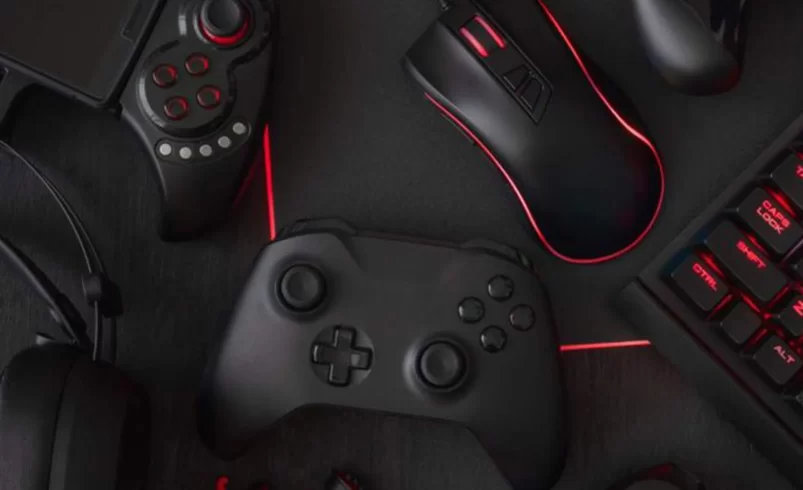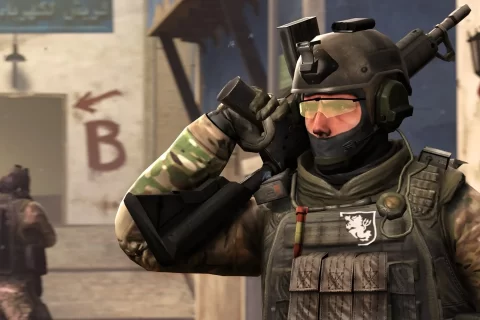
Tutorial for Blender’s 3D Modeling Tools and Shortcuts for Beginners.
With its massive interface, Blender can seem like an intimidatingly complex program to start learning. The simplest tasks can be accomplished in a variety of ways and with different tools to work as efficiently and organized as possible.
The first step to creating in Blender is modeling, and Blender’s modeling features are incredibly versatile tools that can be combined to create some of the most complex or detailed meshes. So let’s take a look at these modeling tools, what they can do and how to use them.
conversion tool
move
to turn
scale
convert
annotation
measure
add dice
mode switch
Vertex, edge and face selection
Modeling tools in edit mode
mission
to stretch
Chamfer
circumcision
knife
Let’s start!
Transform tool, move, rotate and scale
The most basic tool in the Blender 3D viewport is the transform tool, which can be used in object mode and edit mode to move, rotate and scale entire meshes, or even specially selected edges, faces or vertices.
Move (shortcut key: G)
This tool, selectable from the toolbar on the left side of the 3D viewport, allows you to move a selected object or objects along the X, Y, or Z axis. Arrows may appear when selecting a tool seen at The center of one or more objects that are selected and dragged to move the objects in the same direction.
Alternatively, the shortcut key G can also be used to freely move the selected object independently of a specific axis.
By pressing the X, Y, or Z key immediately after pressing G, you can restrict movement to those specific axes. For example, if you press G, then Y, the selected object can only move around the Y axis.
Alternatively, if you press G, then Shift+Y, the object can move on any axis other than Y, so it can only move on the X and Z axes.
In edit mode, pressing the G key combination twice enables edge sliding or vertex sliding, depending on the selection mode. This allows selected edges or vertices to only move along the surface they are currently on.
Rotate (shortcut key: R)
Like the Move tool, the Rotate tool can be accessed from the toolbar on the left side of the 3D viewport. This shows a sphere with 4 different rotation options. The first three, red, green, and blue, allow rotation around the X, Y, and Z axes, respectively.
The fourth option appears as a white circle and allows rotation from the user’s current viewpoint. By holding and dragging each of these circles, the user can rotate the selected object.
The R shortcut can also be used to freely rotate the cube, then pressing the shortcut for one of the axes immediately restricts the rotation to that specific axis. If you use the keyboard shortcut R and Shift+X, Shift+Y, or Shift+Z, you can rotate an object, edge, vertex, or face on any axis other than the selected letter.
Zoom (shortcut key: S)
Likewise, you’ll find a zoom shortcut in the toolbar to the left of the 3D viewport, which functions much like the move tool. Select and drag one of the colored arrows visible in the middle of the object to zoom on that particular axis. Selecting the white circles allows equal scaling on each axis.
With the shortcut S, the object scales equally in all directions from the object’s origin.
The origin of each mesh is shown as a small orange dot, which can be reset to the geometric center by right-clicking the object and selecting Set Origin > Geometry to Origin.
Likewise, zooming can be constrained to any axis by using the X, Y, Z, or the S shortcut for Shift+(axis letter).
Transform Tool (Shortcut: Shift+Spacebar, T)
This tool allows for the use of the move, rotate, and scale tools all at once for a quicker workflow, and is also accessible in the toolbar. Enabling this option can be done by hitting Shift+Spacebar followed by T.
Annotation Tool (Shortcut: Shift+Spacebar, 5)
Annotating your work for future reference or even feedback can be quite useful, and this can be done easily with the annotate tool available in the toolbar. The tool comes with a series of options, including stabilizing the stroke with a radius and factor to adjust the extent to which it is stabilized, as well as the placement.
There are three placement options:
3D Cursor: Place the annotations in a fixed location in the 3D space
View: Place annotations relative to the current view, and moves with the view as the user changes perspective
Surface: Write or draw on surfaces (faces) of any mesh.
The color of annotations can also be changed, but only after a stroke has been drawn.
Holding on the annotate tool in the toolbox also shows further annotation options, such as drawing straight lines, and polygons, or accessing an eraser to delete certain annotations.
Measure Tool (Shortcut: Shift+Spacebar, M)
This tool allows the user to click and drag across a certain object to measure a particular length. At times when detailed accuracy becomes an important factor, this tool becomes helpful in determining exact measurements and sizes with high levels of precision.
Pressing Ctrl while measuring allows snapping the measurement to certain vertices. Alternatively, holding Shift while measuring shows the total thickness of a surface. To delete a measurement/ruler, simply select it by clicking on one of the handles and press X.
Add cube Tool (Shortcut: Shift+Spacebar, 9)
The add cube feature allows the creation of cubes by clicking and dragging to draw the flat base of the cube and then adding the third dimension either vertically or horizontally. This tool is helpful in adding objects of certain dimensions without having to scale them on each individual axis.
Once more, pressing the left Ctrl allows you to snap the corners of the new cube to previously placed vertices, whereas holding left Alt allows the flat base of the cube to be extended with the cursor as the center of the base, rather than one of the corners.
Holding Shift while creating the base allows for it to have a constant aspect ratio, meaning it will be a square base rather than rectangular.
Holding on the Add Cube tool shows more options for available meshes, including cylinders, UV spheres, icospheres, and even cones.
Mode Switching (Shortcut: Tab)
A lot more modeling tools become available in Edit Mode, which can be accessed by selecting the object and hitting Tab or selecting it from the Modes menu in the top left corner of the 3D viewport.
Vertex, Edge, and Face Select Modes (Shortcut: 1, 2, 3)
In edit mode, it is possible to switch between selecting one or more vertices (shortcut: 1), edges (shortcut: 2), or faces (shortcut: 3) by pressing the respective shortcut or selecting it from the Select Mode list at the top-left corner of the 3D viewport.
In case you’d like to select entire faces in edge or vertex select mode, simply select all the edges or vertices of that face.
An alternative method is to hit 3 to switch to face select mode, select the face, and then hit 1 or 2 to go back to vertex or edge select mode, and the required vertices/edges will already be selected.
This image shows the object interaction mode dropdown set to edit mode, and the select mode set to vertex select.
Similar to meshes in Object Mode, selected faces, vertices, or edges in Edit Mode can be transformed using the transformation tools.
Modeling Tools in Edit Mode
Within edit mode, a lot more modeling tools can be used to extrude, bevel, or cut meshes to create the desired shapes.
Inset Tool (Shortcut: I)
This tool can be used in face select mode to create a smaller face on the surface of an already selected face. After the inset is complete, further amendments can be made using the menu pop-up in the bottom left corner.
It should be noted that this menu closes after any additional clicks are made, and can’t be brought back unless the last action is undone with Ctrl+Z.
This image shows a face, outlined in red, insetted using the I shortcut. The operation panel menu in the bottom left allows further customization, such as thickness, which determines the size of the new insetted face.
Extrude Tool (Shortcut: E)
Blender’s extrude tool allows for the extrusion of one or more faces, vertices, or edges by pressing the E shortcut. This creates duplicates of the chosen vertices, which can immediately be moved across an axis normal to the selected face, or you can press X, Y, or Z to move it along a specific axis.
It is also possible to use any of the transform tools to now further manipulate the extruded meshes.
Once more, numerous options become available in the Adjust Last Operation panel in the bottom left corner of the viewport.
Bevel Tool (Shortcut: Ctrl+B)
Quite often, objects require smoother edges in order to seem more natural or aesthetically pleasing, and such rounded edges can be accomplished using Blender’s bevel tool.
After selecting the edges to be beveled, pressing Ctrl+B and sliding the cursor creates a bevel with 1 segment. Scrolling the center mouse wheel up or down will increase or decrease the number of segments in the bevel, hence making it smoother.
Once you click to confirm the bevel, the same properties panel in the bottom-left corner gives further customization options.
The width of the bevel can be adjusted again here, as well as the shape. A shape value above 0.5 will direct or point the bevel more outwards, whereas a shape value below 0.5 will direct it inwards.
In case a beveled edge seems to look incorrect, stretched, or generally out of scale, ensure the object’s scale is applied by going to Object Mode > Ctrl+A > Scale, and try the bevel again.
Loop Cut Tool (Shortcut: Ctrl+R)
In order to add further geometry to a mesh, loop cuts can be added in the form of straight edges or rings wrapping around entire meshes. To add these, simply use the Ctrl+R shortcut and hover over an existing edge to view a yellow line – this shows where your loop cut will appear.
Scrolling the middle mouse wheel up or down increases/decreases the number of loop cuts. After clicking to confirm the number of cuts, it is possible to slide the location of the cuts across the surface of the mesh.
In case you’d like to keep the cut on the center of the face, right-click to cancel this sliding movement. If you change your mind, you can always select all the edges of the loop cut and hit the G key twice to allow movement confined to the surface of the mesh.
Knife Tool (Shortcut: K)
Although loop cuts are customizable in their own way, it often becomes necessary to add vertices or cut certain edges or faces in a more flexible manner. This can be done using the knife tool by hitting K, which allows the drawing of any shape onto a surface by clicking where you would like to add a new vertex.
Clicking to place multiple vertices creates new edges between them, and closing off vertices in any shape creates a new face.
In order to create straight lines using the knife tool, it is often helpful to use the gizmos in the top right corner of the screen to align your view to the surfaces and use the A shortcut to create straight lines.
To make a cut from a knife pass through the entire mesh and show up on an opposite end of the mesh as well, press C before you start drawing the vertices.
Final Thoughts
Blender 3D has a wide range of flexible and highly customizable modeling tools, and each of these can be used in combination to model anything you could possibly think of.
There are still many different tools available for more complex use, and further info on those can be found on the official Blender manual here.





